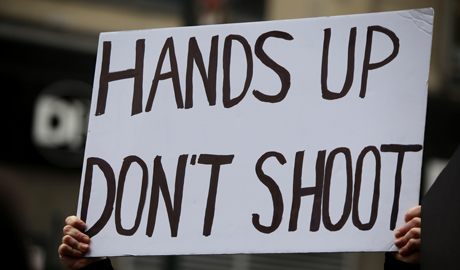 |
| Body worn cameras are seen as improving accountability, and also can provide evidence in criminal trials |
Body worn cameras have realised a surge in demand across the United States in the current climate of concern about how police interact with citizens, especially when that interaction turns deadly.
Embracing body worn cameras
For example, Los Angeles has approved a $69.6 million plan to equip 7,000 Los Angeles patrol officers with body worn cameras by the end of 2017. The cameras are seen as improving accountability, and also can provide evidence in criminal trials. Los Angeles City Councilmen raised concerns about the high cost of the system, but a report by consultant firm Justice and Security Strategies estimates that the money would be offset by savings in less litigation costs because the cameras could absolve officers accused of misconduct, and deter the use of force by officers.
San Jose, California, is another jurisdiction embracing body worn cameras, and the first 20 San Jose police officers began wearing the cameras on patrol this month. The cameras will provide the “truth” when an officer’s perception of an event differs from the perception of other individuals involved. The programme will cost $4.4 million over the next five years, and will provide a valuable training tool in addition to other benefits. Officers will be required to activate the cameras for police call and face-to-face citizen encounters.
Storage and costs
Costs of body worn cameras extend beyond the equipment, also including the costs of reviewing, disclosing and transcribing video evidence from the cameras related to criminal, delinquency and child protection cases. To handle the extra workload, the Hennepin County (Minnesota) Attorney’s Office will add two new paralegal positions and a new legal secretary. Even with the extra workload, the County Attorney’s office says body cameras will be an asset.
The industry faces a challenge to develop a cost-effective, chain-of-custody system to properly collect, store and access video footage. Kelley Voss of government data firm Onvia has written about the challenges of storing body camera video footage – and the cost.
 |
| The spike in body worn cameras has been referred to as the “Ferguson effect,” based on the well-publicised police shooting in 2014 (Image: a katz / Shutterstock.com) |
The "Ferguson effect"
The spike in body worn cameras has been referred to as the “Ferguson effect,” based on the well-publicised police shooting in Ferguson, Missouri., in 2014. Onvia reports there were almost six times more purchase orders issued for body worn cameras and related services in 2014 compared to 2013 – 3,400 purchase orders in 2014 compared to only 533 the year before.
Among the lessons of Ferguson might be the benefit of video surveillance to document and confirm whether a police officer’s actions are appropriate to the situation. Body worn cameras are filling that gap.








































